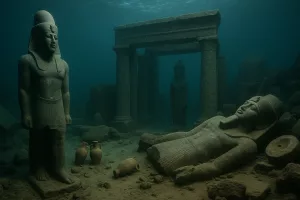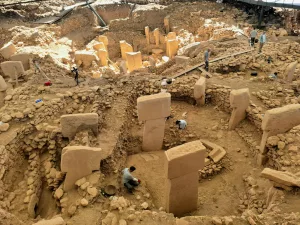From the grand amphitheaters of ancient Rome to the intricately carved stone stages of Greece, the world is dotted with remarkable ancient theatres that showcase the architectural and artistic achievements of past civilizations. These iconic venues were not merely places for entertainment but also cultural and social hubs that reflected the technological ingenuity, aesthetic sensibilities, and communal values of their time. Each theatre tells a unique story, offering modern visitors a glimpse into the performances, traditions, and lives of ancient societies.
Below, we delve into some of the most extraordinary ancient theatres, each a testament to human creativity and a timeless symbol of cultural heritage.
The Theatre of Epidaurus, Greece

The Theatre of Epidaurus is a marvel of ancient Greek architecture known for its exceptional acoustics. Built in the 4th century BC, this UNESCO World Heritage Site continues to host performances to this day. The theatre’s perfect acoustics allow even the faintest whisper from the stage to be heard in every seat of the audience, creating a truly immersive experience for spectators.
Surrounded by lush greenery, the theatre blends seamlessly with its natural environment, embodying the Greek ideal of harmony between man and nature. With a seating capacity of around 14,000, it hosted theatrical performances, religious ceremonies, and festivals in honor of Asclepius, the god of medicine. Today, it remains a popular venue for cultural events, allowing audiences to experience the timeless power of Greek drama in the same space where it captivated ancient audiences thousands of years ago.
The Roman Theatre of Orange, France

The Roman Theatre of Orange in France is one of the best-preserved Roman theatres in the world. Its stunning facade and towering stage wall transport visitors back to the days of Roman entertainment. The theatre’s elaborate carvings and intricate decorations provide a glimpse into the opulence and grandeur of Roman cultural events, showcasing the wealth and artistic sophistication of the era.
Built during the reign of Augustus, the theatre could accommodate up to 10,000 spectators and hosted a variety of performances, including plays, poetry readings, and musical events. Its monumental stage wall, adorned with statues and reliefs, acted as both a backdrop and an acoustic enhancer, amplifying the voices of performers. Recognized as a UNESCO World Heritage Site, the theatre continues to host events like the Chorégies d’Orange opera festival, bridging ancient and modern art in a spectacular setting.
The Colosseum, Rome, Italy

One of the most iconic ancient theatres, the Colosseum in Rome is a symbol of Roman engineering prowess. This massive amphitheater once hosted gladiatorial contests and other spectacles for crowds of up to 80,000 people. The Colosseum’s innovative design and advanced engineering techniques, such as the system of trapdoors and elevators used for dramatic entrances and exits, reflect the Romans’ ingenuity and architectural mastery.
Built in the 1st century AD under Emperor Vespasian and completed by his son Titus, the Colosseum was the heart of Roman public life, hosting events that ranged from mock sea battles to wild animal hunts. Its elliptical shape ensured that every seat had a good view of the action, while its tiered seating system reflected the strict social hierarchy of ancient Rome. Despite its age and partial ruin, the Colosseum remains a powerful symbol of Rome’s enduring legacy, attracting millions of visitors each year.
Theatre of Dionysus, Athens, Greece

The Theatre of Dionysus in Athens is considered the birthplace of Greek tragedy. Set against the backdrop of the Acropolis, this ancient theatre held performances of classic Greek plays by renowned playwrights such as Sophocles, Aeschylus, and Euripides. The theatre’s design, with its tiered seating and stone structures, allowed for the integration of music, dance, and poetry, creating a rich and immersive cultural experience for ancient Athenian audiences.
Built in the 5th century BC, the theatre could accommodate up to 17,000 spectators and was an essential part of the city’s religious festivals, particularly the Dionysia, held in honor of the god Dionysus. The theatre’s layout, including the orchestra and skene (stage building), influenced the design of later Greek and Roman theatres, leaving a lasting impact on the development of Western performance spaces.
Theatre of Marcellus, Rome, Italy

The Theatre of Marcellus in Rome was one of the largest and most important theatres in ancient Rome. Commissioned by Julius Caesar and completed by Augustus, it served as a model for later Roman amphitheaters. The theatre’s innovative architectural features, such as the use of concrete for the seating tiers and vaulted passageways, set a new standard for Roman public entertainment venues, influencing architectural design for centuries to come.
Named after Augustus’s nephew, Marcus Marcellus, the theatre could hold approximately 20,000 spectators and hosted plays, musical performances, and public events. Today, the theatre’s lower levels remain intact, showcasing the durability of Roman engineering, while its upper tiers have been repurposed into private apartments, offering a fascinating blend of ancient and modern life.
Theatre of Herodes Atticus, Athens, Greece

Located at the foot of the Acropolis, the Theatre of Herodes Atticus is a cultural gem that continues to host concerts, plays, and ballet performances. Its stunning stone arches and panoramic views make it a must-visit for art and history enthusiasts. The theatre’s picturesque setting, overlooking the city of Athens and the Aegean Sea, creates a magical backdrop for artistic performances, enhancing the audience’s experience with its natural beauty and historical significance.
Built in AD 161 by Herodes Atticus, a wealthy Roman senator, in memory of his wife, the theatre originally featured a wooden roof made of cedar. It was restored in the 1950s and has since become a premier venue for the Athens Festival, hosting world-class artists and performers. Its seamless blend of ancient architecture and modern functionality makes it a testament to the enduring appeal of classical design.
The Great Theatre of Ephesus, Turkey

The Great Theatre of Ephesus is a testament to the architectural prowess of the ancient Greeks and Romans. With a seating capacity of over 25,000, it was a focal point for entertainment and political gatherings in ancient Ephesus. The theatre’s grand scale and intricate design, including ornate decorations and elaborate stage structures, reflect the importance of cultural and political events in ancient Ephesus, serving as a hub for public gatherings and performances.
The theatre, built in the 3rd century BC and expanded by the Romans, is set against a hillside, providing stunning views of the surrounding area. Its exceptional acoustics and well-preserved stage area make it a highlight for visitors exploring the ancient city. The theatre also played a significant role in the spread of Christianity, as it is believed to be the site where St. Paul addressed the people of Ephesus.
The Theatre of Taormina, Sicily, Italy

The Theatre of Taormina in Sicily offers breathtaking views of Mount Etna and the Mediterranean Sea. This ancient theatre, dating back to the 3rd century BC, is renowned for its well-preserved ruins and spectacular backdrop. The theatre’s location atop a hill overlooking the sea, combined with its ornate decorations and impressive acoustic properties, creates a truly enchanting atmosphere for both performers and audiences, making it a popular destination for cultural events and sightseeing.
Originally built by the Greeks and later modified by the Romans, the theatre reflects a harmonious blend of architectural styles. Its semicircular design ensures excellent acoustics, allowing performances to be heard clearly even in its uppermost seats. Today, it hosts festivals, concerts, and theatrical productions, continuing its legacy as a center for art and culture.
The Odeon of Herodes Atticus, Athens, Greece

Another iconic theatre in Athens, the Odeon of Herodes Atticus is a small but stunning venue that showcases the beauty of ancient Greek architecture. Today, it hosts cultural events such as music concerts and operas beneath the starlit sky. The theatre’s intimate atmosphere and elegant design, featuring intricately carved stone seating and arched passageways, provide a sense of intimacy and sophistication for modern performances, echoing the artistic legacy of ancient Greek cultural venues.
Nestled on the southwestern slope of the Acropolis, the Odeon was originally built for musical performances, with a capacity of approximately 5,000. Its semicircular layout and carefully crafted acoustics continue to impress audiences, making it one of the most cherished cultural venues in Athens.
Theatre of Sabratha, Libya

The Theatre of Sabratha in Libya is a lesser-known gem that boasts majestic columns and intricate carvings. This ancient Roman theatre, built in the 2nd century AD, offers a glimpse into the rich cultural heritage of North Africa. The theatre’s well-preserved ruins, including ornate decorations and elaborate stage structures, showcase the influence of Roman architecture and culture in the region, highlighting the cross-cultural exchange and artistic innovation of the ancient world.
Overlooking the Mediterranean Sea, the theatre’s three-tiered stage is a masterpiece of Roman craftsmanship, featuring statues, friezes, and columns that evoke the grandeur of imperial Rome. Its location within the ancient city of Sabratha, a key trading hub, reflects the region’s importance in connecting Roman, African, and Mediterranean cultures. Today, it stands as a testament to the enduring legacy of Roman architecture and its ability to inspire awe across generations.
Conclusion
Ancient theatres are more than architectural marvels; they are living remnants of history, culture, and human ingenuity. From the perfectly preserved acoustics of the Theatre of Epidaurus to the colossal grandeur of the Colosseum, these venues tell the stories of civilizations that celebrated art, performance, and communal experiences. Each theatre is a testament to the creativity and technical skill of its builders, reflecting the values, beliefs, and advancements of the societies that constructed them.
Today, these historic spaces continue to inspire and captivate, serving as both cultural landmarks and active venues for artistic expression. Visiting these remarkable theatres offers a unique opportunity to step back in time, marvel at ancient achievements, and appreciate the enduring legacy of performance and storytelling. Whether as a history enthusiast or a lover of the arts, these ancient theatres provide an unforgettable connection to humanity’s shared past.




